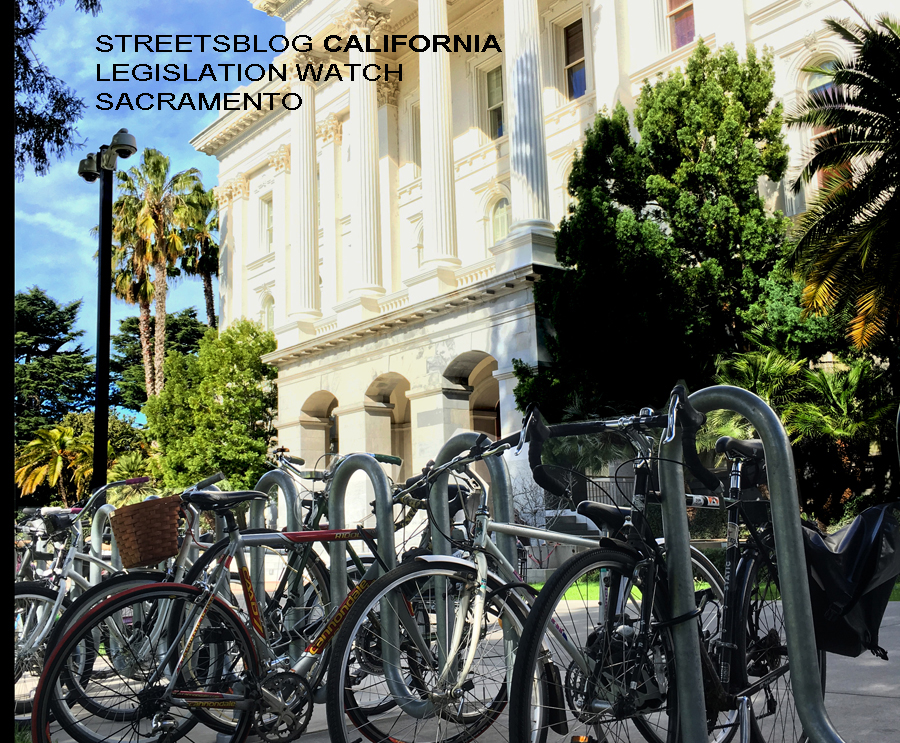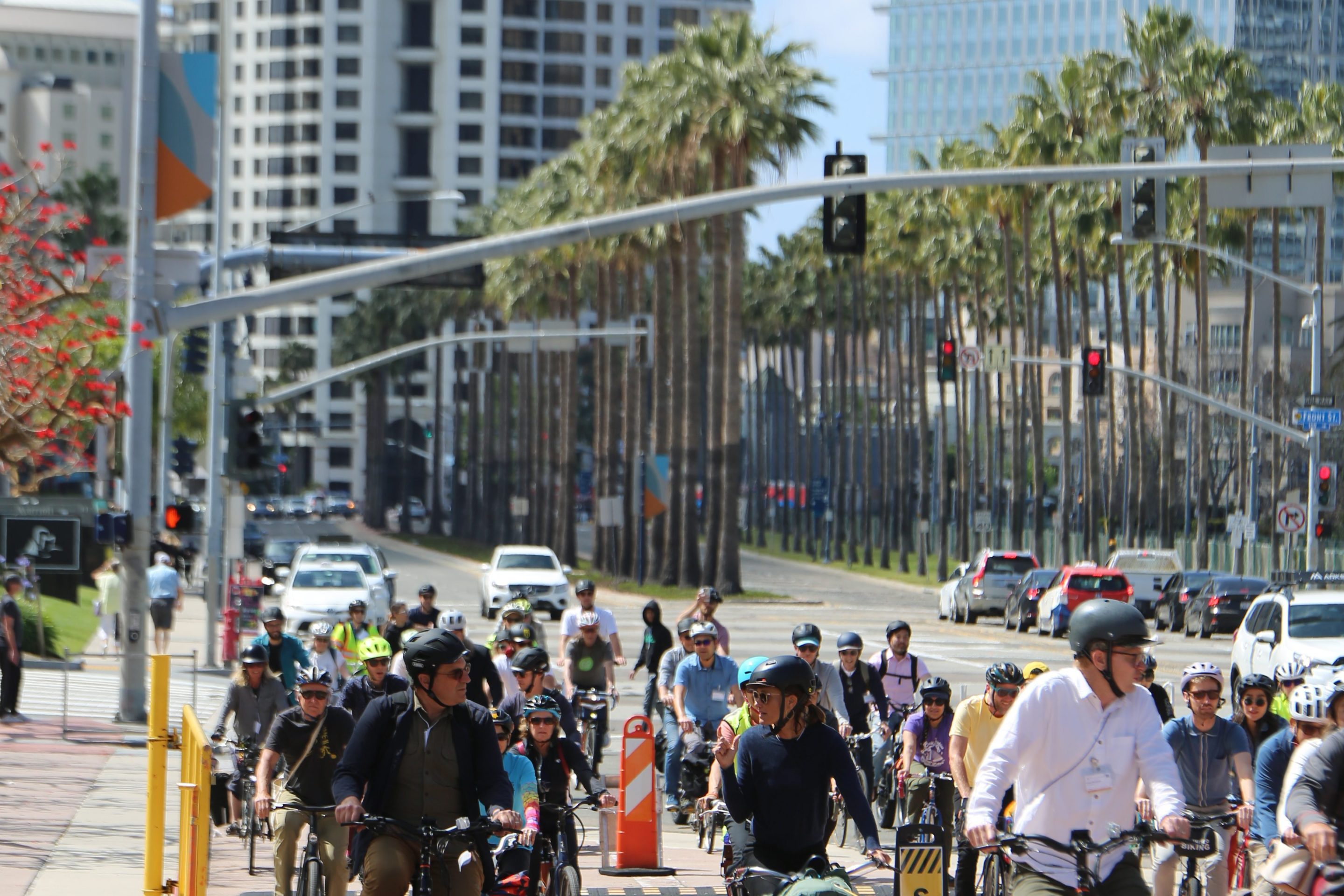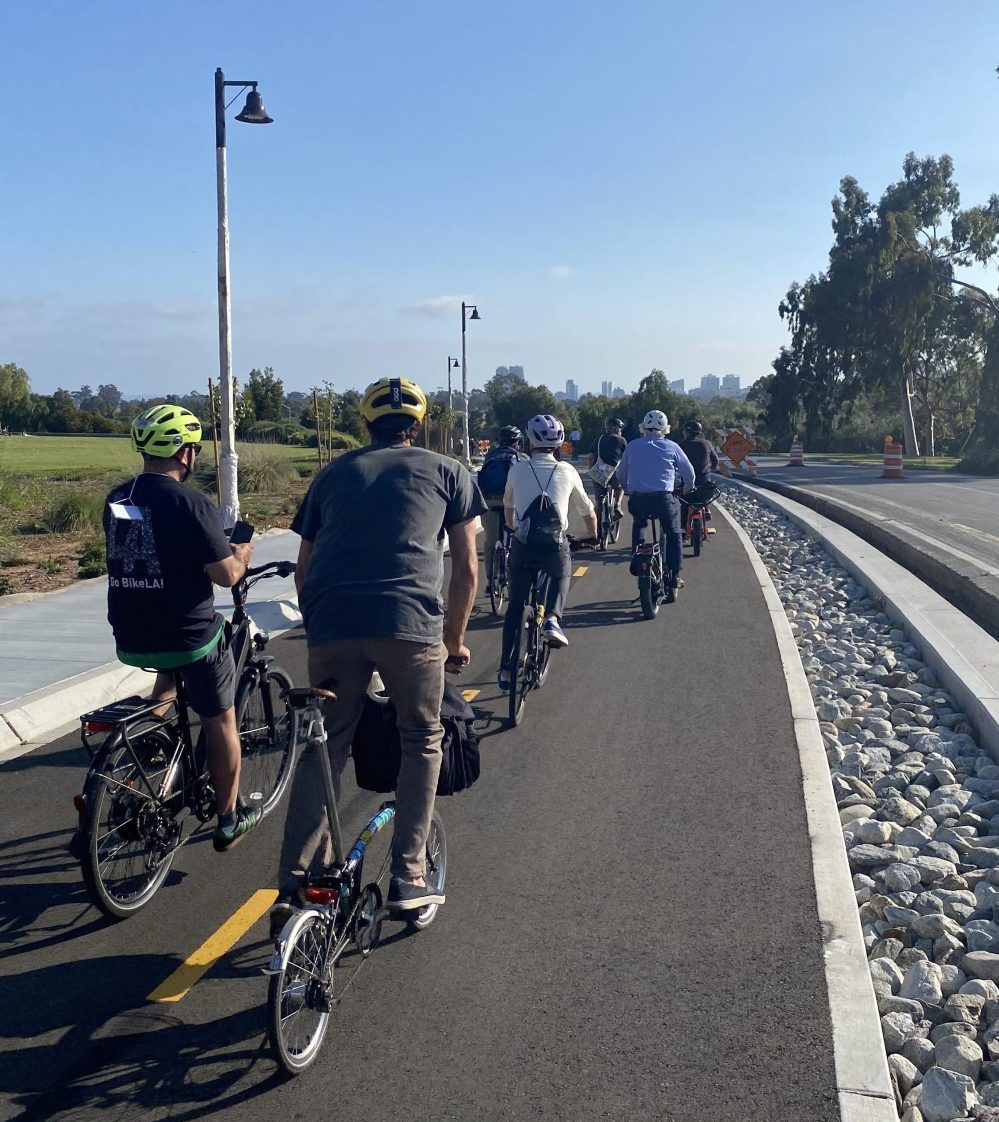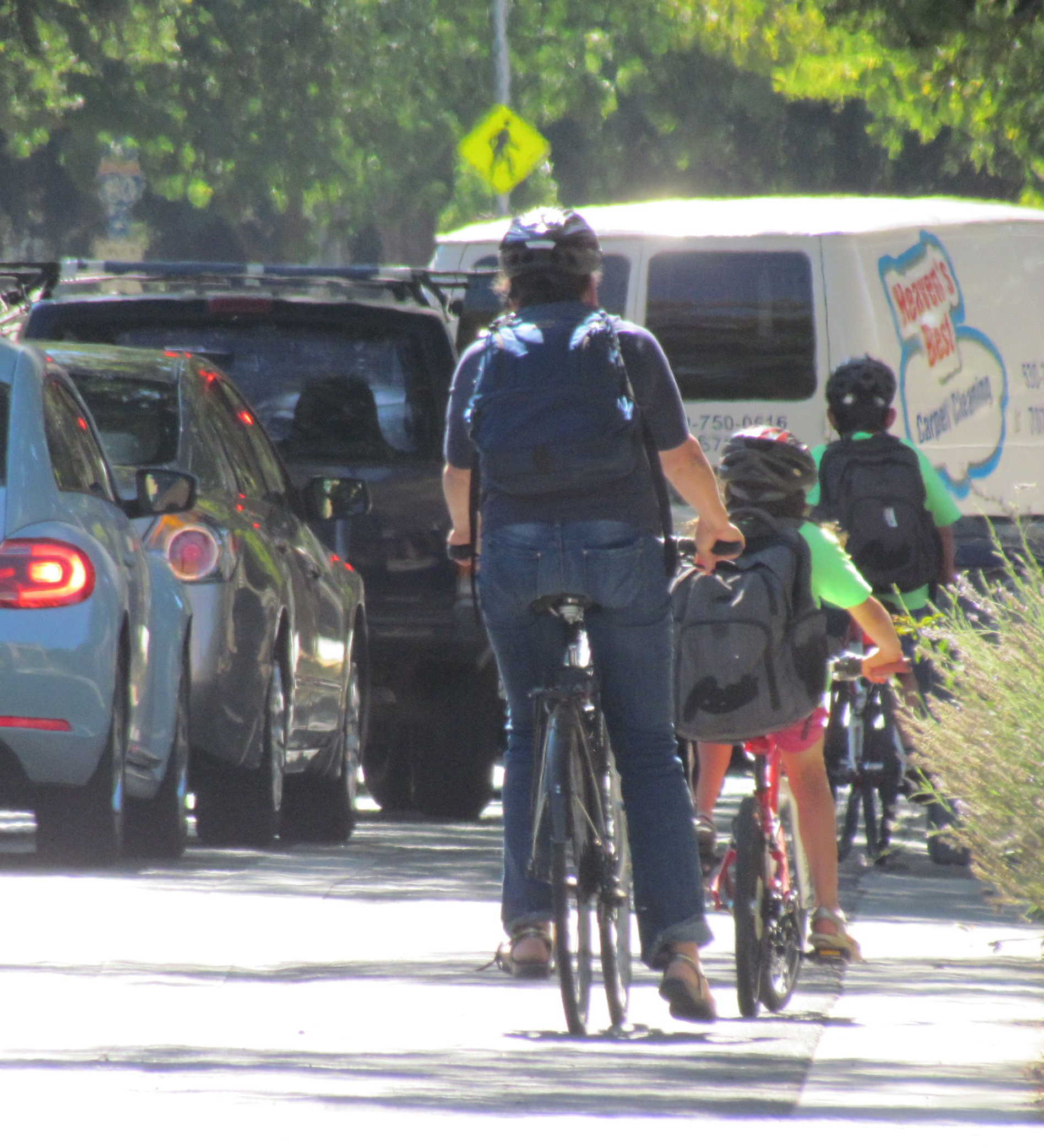Note: GJEL Accident Attorneys regularly sponsors coverage on Streetsblog San Francisco and Streetsblog California. Unless noted in the story, GJEL Accident Attorneys is not consulted for the content or editorial direction of the sponsored content.
Legislative committees are back in session after a brief break for members to focus on budget hearings. The Senate Transportation Committee met today and discussed the following bills:
Guidance Needed for Safe Movements at Intersections
Too many cities just drop bike lanes right at intersections, where they are most needed, leaving bicyclists without guidance for getting through safely. Where there are right-turn-only lanes it can be even more confusing for bike riders. Current California law says it is illegal to use the right-turn lane to go straight, even if that is the safest move, since traffic turning right tends to be slower moving that straight-through traffic. Also, Caltrans has no official standards on how to make it clear what the safest movement is.
A.B. 1266 from Assemblymember Robert Rivas (D-Hollister) would require Caltrans to develop guidance, including signs and pavement markings, on how to do so. The hope is also that by requiring Caltrans to look closely at relevant designs, the bill might "expand the tool box of bicycle lane design options in the state."
Senate Transportation Chair Jim Beall (D-Campbell) took the opportunity to ask California Bicycle Coalition Executive Director Dave Snyder about a different source of concern. "When people open their car door into a bike lane--is that a frequent source of crashes?" he asked.
"Unfortunately, yes it is," said Snyder. "I know someone who died just last month on a bike when they swerved to avoid a car door that opened suddenly."
"A well designed bike lane [avoids this problem because it is placed] outside the door zone," said Snyder, "but unfortunately many, if not most, are not designed that well."
"The DMV could put in its guidance advice to drivers to open the car door with their right hand--what's known as the Dutch Reach, which is required in the Netherlands," he added.
"How do we accomplish that?" asked Beall. "I'll make that suggestion--we'll work on that."
A.B. 1266, which is not about the Dutch Reach but about Caltrans guidance on right-turn lanes, passed the committee without any speakers in opposition.
State Transportation Plan Must Consider Emission Reductions
The committee also voted to pass A.B. 285 from Assemblymember Laura Friedman (D-Glendale), which would require the California Transportation Plan to address how the state will meet state greenhouse gas emission goals as well as state and national air quality standards.
The plan is a long-range vision that does not create or fund projects or programs, but lays out a framework as required for transportation projects to receive federal funding. A.B. 285 would bring the plan into alignment with other state goals and programs, require it to consider the potential impacts of emerging technologies over a twenty-year timeframe, and include consideration of the environmental justice impacts of moving people and freight.
Beginning in 2025.
Will Barrett of the California Lung Association, speaking in favor of the bill, said it was a "common sense update" to current state transportation planning. Rocky Rushing of the Coalition for Clean Air also spoke in support, pointing out that the current disconnect between climate goals and transportation planning is making it ever harder to clean up air quality.
A.B. 285 will now go to the Senate Committee on Environmental Quality.
Joint CTC/CARB Meetings Should Include HCD
The committee also passed A.B. 185, from Assemblymember Tim Grayson (D-Concord), which would add the Department of Housing and Community Development to the joint meetings currently required by law between the California Transportation Commission and the California Air Resources Board. Those meetings have had meager success in bringing the two agencies together to coordinate on mutual goals. A representative of the CTC appeared to tell the committee that "it was evident from testimony [at these joint meetings] that a key voice was missing in the discussion in the greater landscape of looking at the state's environmental and greenhouse gas goals."
The CTC also frequently says that other "key voices" are missing, but usually they are referring to real estate interests and industry, which are well represented by the commissioners themselves.
Ride-hail Companies Need to Share Their Data
Assemblymember Friedman had several bills before the committee. Her scooter bill, A.B. 1112, was held back for a future hearing date, but A.B. 1142 was passed on to the Rules Committee this afternoon. While A.B. 1112 would allow scooter companies to sidestep local requirements to provide data, this bill would do the opposite for ride-hail companies.
That is, it would require the CPUC to provide cities with data they collect from ride-hail companies, after disaggregating it to remove personally identifiable information.
Cities have had to plan transportation systems in the absence of data from these companies, and regional agencies have struggled to understand what their effect has been on congestion, emissions, and even transit ridership--although it is clear they have had tremendous impacts.
A representative of the tech industry (TechNet) was there to decry the privacy dangers of allowing the government to get its hands on personal data.
But Richard Marksman of the American Society of Civil Engineers reminded the senators that "good data makes for good decision making." And Seleta Reynolds of LADOT--and NACTO--testified in support of the bill. "NACTO has long been a champion of daylighting data, which makes it possible to manage the public realm for safety, climate, and economic mobility. Data is our lifeblood," she said. "TNCs have claimed that they exist to fill empty seats in cars, but what we have seen are decreases in transit use, and increases in traffic congestion and emissions."





